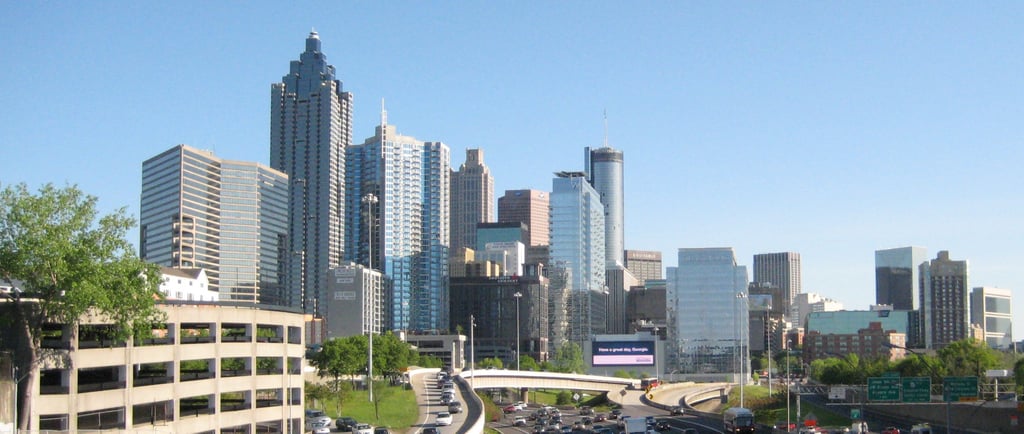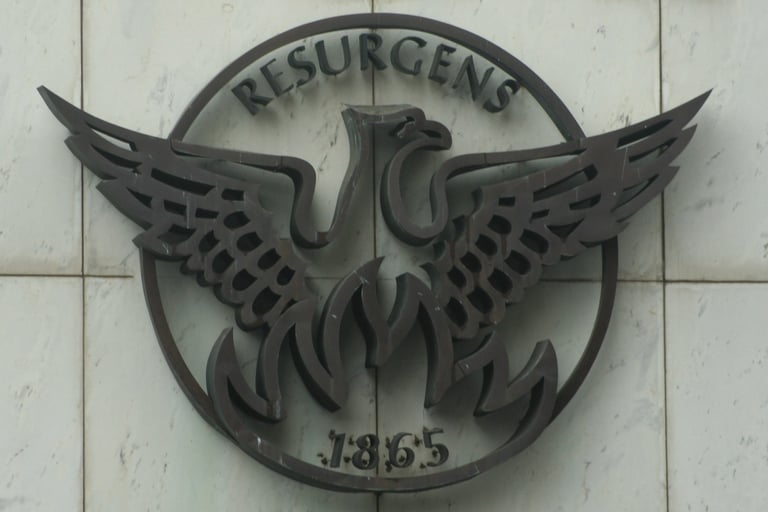Atlanta – Phoenix from the Ashes
Discover Atlanta’s powerful rebirth—a city that rose from the ashes to become a vibrant hub of culture, progress, and Southern resilience
DESTINATIONS
Jetsclusive
6/27/20255 min read


Atlanta – Phoenix from the Ashes
Atlanta’s skyline may be full of new glass towers, but the city stands on a foundation of ashes and grit. More than a place with Southern charm, Atlanta has built a reputation for starting over and finding new life each time fire or hardship tries to hold it back. The phoenix, a mythical bird that rises alive from its own ashes, fits Atlanta’s story so closely that it’s not just a logo. It’s the city’s pulse—a living metaphor for renewal seen in its streets, its culture, and the spirit of its people.
The Origin of Atlanta’s Phoenix Identity
Atlanta knows what it means to be burned down, both literally and figuratively. That resilience began during the Civil War. In 1864, General Sherman’s forces torched the young city during their infamous March to the Sea. Businesses, homes, and lives were reduced to ruins. Yet Atlanta rebuilt, faster and bolder than before. As Reconstruction began, leaders looked for a badge that fit the city’s story—a symbol strong enough to measure up to its rebirth.
The answer had been echoing through myth for centuries: the phoenix, a creature that meets death in fiery collapse but never stays down. By the late 1800s, Atlanta had officially embraced the phoenix as its symbol. You’ll find it on the city seal, carved into buildings, and celebrated during events that draw visitors from every corner. The phoenix is more than a throwback; it’s Atlanta’s promise to its citizens that loss will never be the end of the story.
Rising from the Civil War: Atlanta’s First Rebirth
After the Civil War, Atlanta looked nothing like the railway hub it had once been. Charred ruins marked the old city lines. The population shrank, businesses shuttered, and spirits sagged. But Atlanta’s leaders saw opportunity beneath the rubble.
Within a decade, the city’s famous rail lines were rebuilt, drawing jobs, investment, and a rush of newcomers. Cotton mills replaced ashes. New neighborhoods sprouted where cannons once fired. By the 1880s, Atlanta was a leader in Southern industry, with bustling factories, hospitals, and markets.
This quick rebound didn’t erase the scars of war. Instead, it gave Atlanta an attitude—one that values persistence, tenacity, and innovation. The city proved not just that it could survive, but that it could thrive on its own terms.
The Phoenix on Atlanta’s Seal: Adopting a Symbol of Hope
The civic adoption of the phoenix in the late 19th century cemented Atlanta’s identity. When city officials added the bird to the official seal, they weren’t just choosing a mascot. They were making a promise. The image of the phoenix rising from flames became more than an ornament—it was a rallying point during hard times and a reminder that the city’s spirit wouldn’t break.
This wasn’t just for show. Residents began to see themselves in the bird. Public schools taught the “rising from ashes” story, reinforcing local pride. Monuments and public art lifted this motif even higher, from city celebrations to the names of local businesses.
For Atlanta, the phoenix isn’t just history—it’s a living force that shapes the city’s self-image and how it faces new troubles.
Compare Private Jet Pricing To Atlanta Here Powered by Villiers Jets — Trusted by 1,000+ flyers worldwide
Modern Revivals: Economic and Cultural Renewal in Atlanta
Atlanta’s story of renewal didn’t stop with Reconstruction. From economic downturns to moments of national tragedy, the phoenix keeps returning in new forms. The city’s recovery after the 2020 pandemic stands out as a fresh example, matched by creative explosions in art, music, and community life.
Economic Recovery After the 2020 Pandemic
Atlanta faced huge hurdles in early 2020. Restaurants closed. Business travel dried up. Major events were cancelled. The city’s service and hospitality sectors took heavy losses. Yet, just as in its earliest days, Atlanta found ways to rebuild.
Data from the Bureau of Labor Statistics shows that, while hospitality and retail suffered most, Atlanta’s tech and logistics industries helped balance the scales. By early 2023, the unemployment rate had fallen to near pre-pandemic lows. Warehousing and tech startups brought new jobs. Housing construction picked up, with neighborhoods like Midtown and Westside buzzing with new residents and energy.
Here’s how Atlanta’s rebound stands out compared to other U.S. cities:
Tech job growth outpaced national averages, attracting young talent and new investment.
Diverse economic base helped the city weather sector-specific downturns.
Transportation and logistics continued to thrive, thanks to Hartsfield-Jackson Atlanta International Airport and a well-connected rail system.
While not every community felt the recovery equally, Atlanta’s ability to adapt its economy became another layer in its phoenix story.
Cultural Rebirth: From Tragedy to Creative Capital
Atlanta’s rebounds haven’t all been about dollars and cents. After the 1962 Orly Airfield tragedy, which claimed the lives of over one hundred Atlantans, the city faced deep sorrow. But grief didn’t win. In response, civic leaders and artists pooled resources to create the Woodruff Arts Center—a creative hub that now hosts major museums, the Atlanta Symphony Orchestra, and The Alliance Theatre.
This moment marked a shift. Rather than hide from loss, Atlanta answered with art and culture. New music scenes flourished, from OutKast’s hip-hop to thriving indie galleries in the Old Fourth Ward.
What followed was a cultural boom that continues today:
Local neighborhoods support murals and public art honoring both struggles and successes.
Film and TV production found a home here, earning Atlanta its nickname “Hollywood of the South.”
The city hosts dozens of festivals, celebrating everything from jazz to food to tech.
Atlanta turned pain into beauty, making culture an engine that drives its identity.
Compare Private Jet Pricing To Atlanta Here Powered by Villiers Jets — Trusted by 1,000+ flyers worldwide
Community and Identity: Phoenix as a Living Metaphor
The phoenix isn’t just on the city seal—it lives in Atlanta’s neighborhoods. Community initiatives, public art projects, and memorials keep the symbol alive.
Walk through the city and you’ll see:
Murals in neighborhoods like Cabbagetown and the BeltLine, using fire and flight motifs.
Community gardens and green spaces springing up where vacant lots once sat.
Memorials and museums honoring tragedy and progress side by side, sparking conversations about growth and memory.
Public schools fold the phoenix story into lessons about local pride and civic duty, passing the metaphor onto new generations. Nonprofits use it in their logos and names, tying their missions to the city’s history of bouncing back.
The phoenix isn’t just a relic. It’s the spirit of people working together and refusing to give up when times get tough.
Conclusion
Atlanta, like the phoenix, never accepts defeat as the final word. From Civil War ashes to global pandemic setbacks, the city has found ways to rebuild, reimagine, and rise higher each time. Its economy adapts, its culture flourishes, and its people keep the memory of recovery close at hand.
The phoenix means more here than anywhere else—it’s a story lived out in neighborhoods, jobs, and community spirit. Atlanta sets an example that, no matter what flames destroy, hope and determination can always bring a city back to life.


Luxury
Explore the world of private aviation and travel.
support@jetsclusive.net
© 2025. All rights reserved.
